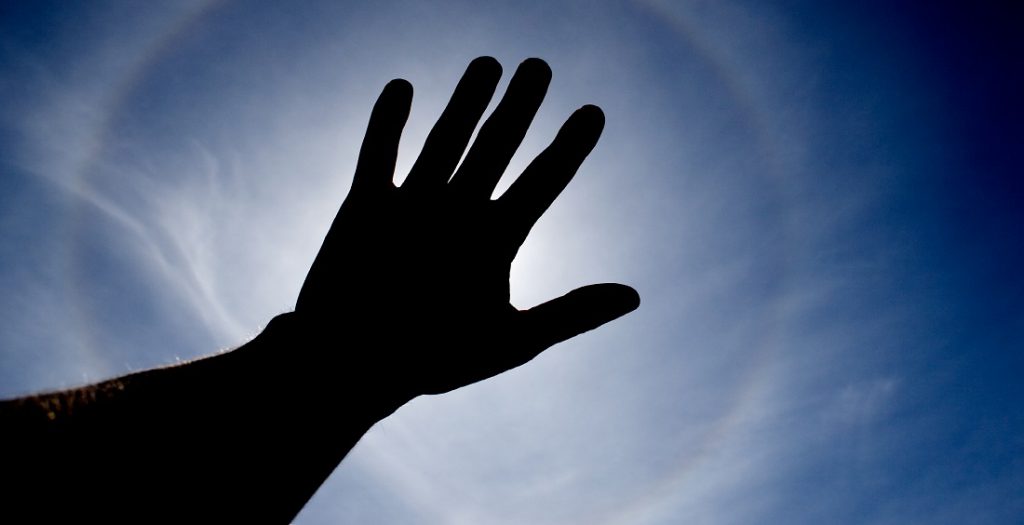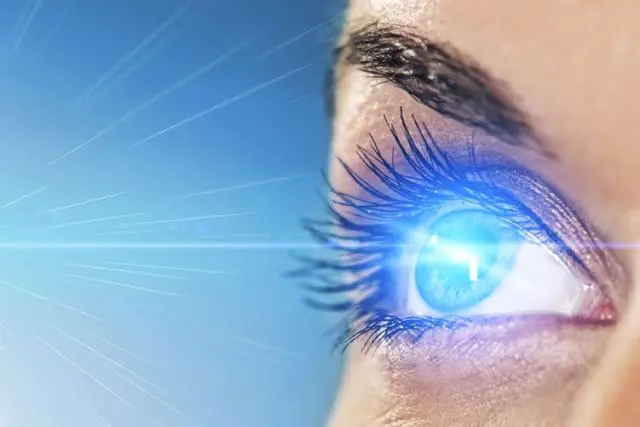This guide cuts through the medical jargon to reveal exactly what UV damage to the eyes looks like and the treatments that actually work.
Most people don’t realize that UV damage to eyes can occur even on cloudy days, with symptoms ranging from subtle irritation to serious vision changes that ophthalmologists see spike during summer months.
But here’s what’s really concerning—the damage doesn’t always show up immediately. Sometimes it silently accumulates for years before you notice anything wrong. So how can you tell if it’s already happening to you?
A. Types of UV radiation that affect your eyes
The sun emits three types of ultraviolet radiation, but only two significantly impact eye health:
UVA rays (315-400nm): These penetrate deeply into eye structures, reaching the retina and contributing to long-term damage like cataracts and macular degeneration. UVA rays account for about 95% of UV radiation that reaches the earth’s surface.
UVB rays (280-315nm): These are partially filtered by the ozone layer but can cause more immediate and intense damage to the eye’s surface tissues. UVB rays are responsible for photokeratitis (corneal sunburn) and pinguecula.
UVC rays (100-280nm): Typically blocked by the atmosphere, these rarely cause eye problems under natural conditions.
B. How UV rays penetrate and damage eye tissues
UV radiation damages eyes through a process called photochemical damage. When UV photons strike eye tissues, they create free radicals that disrupt cellular structures and DNA.
Different eye structures absorb UV at varying levels:
| Eye Structure | Primary UV Type | Potential Damage |
|---|---|---|
| Cornea | UVB | Photokeratitis, pterygium |
| Lens | UVA & UVB | Cataracts, early yellowing |
| Retina | UVA | Macular degeneration |
| Conjunctiva | UVB | Pinguecula, conjunctivitis |
The eye’s natural defenses against UV radiation include squinting, pupil constriction, and the filtering capacity of the cornea and lens—but these aren’t enough for prolonged exposure.
C. Seasonal and environmental UV exposure risks
UV radiation isn’t consistent throughout the year or in all environments:
Summer months: 3x higher UV levels than winter
Midday hours (10am-2pm): UV intensity peaks
High altitudes: UV increases 4-5% for every 1,000 feet of elevation
Reflective surfaces: Snow reflects up to 80% of UV rays, water 25%, and sand about 15%
Cloud cover: Surprisingly, thin clouds can allow up to 80% of UV radiation to pass through
Areas near the equator experience stronger UV radiation year-round, while polar regions see extreme seasonal variations.
D. Common misconceptions about UV protection
Many people have dangerous misunderstandings about UV protection:
Myth: Dark sunglasses provide better UV protection.
Reality: Lens color has no relation to UV blocking ability. Clear lenses with proper coatings can provide 100% UV protection.Myth: UV damage only occurs on sunny days.
Reality: UV rays penetrate clouds and can cause damage even on overcast days.Myth: Indoor environments are safe from UV exposure.
Reality: UVA rays can penetrate windows, especially in cars and buildings without UV-protective glass.Myth: Children don’t need UV eye protection.
Reality: Children’s eyes allow more UV light to reach the retina, making protection even more critical for them.Myth: Expensive sunglasses always provide better protection.
Reality: Price doesn’t determine UV protection—look specifically for “100% UV protection” or “UV400” labels.
Warning Signs of UV Eye Damage

Immediate symptoms you shouldn’t ignore
Sunlight exposure can trigger immediate eye reactions that serve as warning signals. Feeling like sand is stuck in the eyes? That’s the cornea’s response to UV eye damage. Eyes turning unusually red, excessive tearing, or experiencing a burning sensation are all classic indicators of photokeratitis – essentially a sunburn of the eye.
Light sensitivity might develop suddenly, making even normal indoor lighting uncomfortable. Vision changes like seeing halos around lights or experiencing blurry vision shouldn’t be dismissed. Pain ranges from mild irritation to severe discomfort that makes opening the eyes difficult.
These symptoms typically appear within 6-12 hours after sun exposure and may last up to 48 hours. Beach days, snow activities, and water sports pose particularly high risks due to reflective surfaces amplifying UV radiation.
Long-term indicators of UV exposure
Prolonged UV exposure creates cumulative damage that manifests over years. Yellow spots or bumps on the white of the eye (pinguecula) often develop, especially toward the nose. These may progress to pterygium – a fleshy growth that can extend onto the cornea and distort vision.
The eye’s lens gradually clouds with cataracts, developing earlier and progressing faster in those with significant UV exposure history. Changes to retinal health become evident through specialized eye exams, showing damage patterns consistent with sun exposure.
Skin around the eyes shows premature aging – excessive wrinkles, discoloration, and loss of elasticity. Eyelid cancers may develop, particularly on the lower lid which receives more direct sunlight.
Conditions that increase your sensitivity to UV damage

Certain medications dramatically increase UV sensitivity. Tetracycline antibiotics, some psoriasis treatments, and several common blood pressure medications top the list. Checking medication labels for photosensitivity warnings proves essential.
Recent eye surgeries leave eyes temporarily more vulnerable to UV radiation. This includes LASIK, cataract surgery, and corneal procedures. Following strict sun protection guidelines during recovery prevents complications.
Pre-existing conditions like albinism, light-colored eyes, retinal disorders, and autoimmune diseases affecting the eyes create baseline vulnerability. High-altitude residents face 4% increased UV exposure with each 1,000 feet of elevation.
Previous eye damage from UV exposure makes the eyes more susceptible to further harm – a vicious cycle that accelerates with each exposure incident.
Read: 5 Powerful Foods to Fight Cataracts Naturally | Sharp Vision
When to seek medical attention
Immediate medical evaluation becomes necessary when vision changes persist beyond 24 hours after sun exposure. Difficulty seeing, significant pain, or extreme light sensitivity warrant prompt attention from an eye care professional.
Strange shapes floating in vision, flashes of light, or partial vision loss represent emergency situations requiring same-day assessment. These symptoms might indicate retinal damage beyond simple surface irritation.
Discharge from the eyes, especially if yellow or green, suggests potential infection complicating the UV damage. Swelling that doesn’t subside within a day or two deserves professional evaluation.
For children showing any UV damage symptoms, medical attention becomes essential as their developing eyes face greater risk of permanent damage from UV exposure.
Differential diagnosis: UV damage vs. other eye conditions
UV damage symptoms often mimic other eye conditions, creating diagnostic challenges. Distinguishing between photokeratitis and common conjunctivitis (pink eye) requires evaluation of recent sun exposure history and specific symptom patterns.
| Condition | Key Differentiating Features |
|---|---|
| UV Damage | Recent sun exposure, bilateral symptoms, no discharge |
| Dry Eye | Chronic symptoms, improves with artificial tears |
| Allergic Reaction | Itching predominant, seasonal patterns |
| Bacterial Infection | Thick discharge, typically unilateral initially |
| Corneal Abrasion | History of trauma/foreign body, intense localized pain |
Dilated eye exams reveal characteristic patterns of UV damage different from those seen in conditions like glaucoma or diabetic eye disease. Specialized imaging can detect subtle UV-related changes not visible during routine examinations.
The timing of symptom onset provides valuable diagnostic clues – UV damage typically shows rapid onset after exposure, while degenerative conditions develop gradually over extended periods.
Common UV-Related Eye Conditions
Photokeratitis: The sunburn of your eyes
Ever spent too much time in the sun and felt like your eyes were on fire afterward? That’s photokeratitis – essentially a sunburn on your eyeballs. This painful condition happens when eyes get overexposed to UV radiation.
The symptoms hit fast, usually within 6-12 hours after exposure:
Intense eye pain
Redness
Blurry vision
Excessive tearing
Light sensitivity
Gritty sensation
The good news? Photokeratitis typically heals on its own within 24-48 hours. The bad news? Those hours can be incredibly uncomfortable. Cooling compresses, artificial tears, and staying in a dark room help ease symptoms while healing occurs.
Pterygium and pinguecula development
These growths on the eye’s surface might sound like exotic creatures, but they’re actually common results of long-term UV exposure.
Pinguecula appears as a yellowish bump on the white part of the eye, typically near the nose.
Pterygium (pronounced ter-IJ-ee-um) takes things further – this fleshy growth can actually extend onto the cornea and potentially affect vision.
Both conditions are more common in people who spend significant time outdoors without proper eye protection. Surfers, farmers, and construction workers face higher risks. While often harmless, these growths can cause irritation, redness, and that annoying feeling of something stuck in the eye. In severe cases, pterygium might require surgical removal if it threatens vision.
Cataracts linked to UV exposure
The natural lens inside the eye should be crystal clear. UV radiation gradually damages proteins in the lens, causing clouding known as cataracts. Research shows that people with higher lifetime UV exposure develop cataracts earlier than those who protect their eyes.
Cataracts develop slowly, with symptoms including:
Blurred vision
Faded colors
Poor night vision
Increased glare sensitivity
Frequent prescription changes
The connection between UV exposure and cataracts is so strong that simply wearing quality sunglasses throughout life can delay or prevent their formation. Once cataracts significantly impact vision, surgical replacement of the cloudy lens with an artificial one becomes necessary.
Macular degeneration risks
The macula – responsible for central vision and fine detail – takes a beating from UV radiation over time. Age-related macular degeneration (AMD) damages this critical area, leading to central vision loss while peripheral vision remains intact.
Early warning signs include:
Straight lines appearing wavy
Difficulty recognizing faces
Needing brighter light for reading
Blurry spot in central vision
While genetics play a significant role in AMD development, environmental factors like UV exposure accelerate the damage. The blue light component of UV radiation particularly stresses retinal cells. Studies suggest that consistent UV protection throughout life reduces AMD risk by 20-30%.
Protecting Vision from UV Damage

UV radiation poses significant risks to eye health, potentially leading to conditions like photokeratitis, cataracts, and macular degeneration. Recognizing the warning signs—including redness, excessive tearing, light sensitivity, and blurred vision—enables prompt intervention before permanent damage occurs. Regular eye exams and consistent use of UV-blocking eyewear remain the most effective strategies for prevention.
Maintaining eye health requires a proactive approach to UV protection. Patients should invest in quality sunglasses that block 99-100% of UVA and UVB rays, wear wide-brimmed hats for additional protection, and schedule annual comprehensive eye examinations. Taking these precautionary measures significantly reduces the risk of UV-related eye conditions and preserves vision for years to come.




